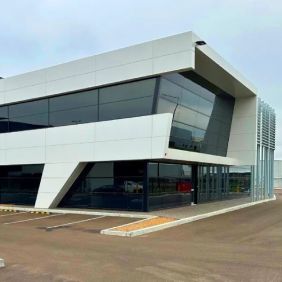Ergonomics: The Unseen Catalyst of the Modern Office
In an era where work culture is undergoing a tectonic shift, one critical aspect that continues to overshadow boardroom discussions is the profound influence of office furniture on productivity and employee wellness. This article delves into why ergonomic office furniture is not merely a silent backdrop of a bustling corporate scene but the unseen catalyst sparking increased productivity and fostering a culture of wellbeing in modern workspaces.
A New Paradigm in Office Functionality
For far too long, office furniture selection has been relegated to the realm of logistic teams and catalogue skimming, with choices often made based on aesthetic appeal and cost metrics. However, the modern office narrative is changing, and it’s time to align our understanding with research-backed findings that suggest well-designed workspaces can serve as incubators for focus and creativity.
The most forward-thinking companies do not view furniture as a static entity but as a dynamic instrument that adapts to the needs of its users, thereby enhancing performance. This article argues that offices should prioritize functionality that directly caters to human physiology, allowing ergonomic design to lead the march towards a healthier, more productive workforce.
The Symbiosis of Furniture and Work Culture
As we embrace new work models, the relationship between furniture design and work culture evolves in unison. The rise of co-working spaces and open-plan offices has seen furniture take centre stage in the promotion of interaction and spontaneous collaborations. However, the symbiosis doesn’t end there. Intelligent furniture, responsive to the demands of today’s multitasker, catalyses an environment primed for innovation, transforming how work unfolds.
Consider how standing desks, adjustable seating, and strategically designed communal areas can dramatically alter the office atmosphere, making it conducive to deep work and expansive thinking. The notion that myriad subtle factors, including the way our bodies interact with furniture, collectively sculpt our cognitive landscape is gaining traction, and it’s time businesses took note.
The Strategic Investment in Intelligent Furniture
Incorporating ergonomics in office design is an investment in the intellectual capital of a company, and forward-thinking businesses are leading by example. Microsoft’s campus, adorned with ergonomic furniture and standing desks, is a testament to the company’s commitment to pioneering employee productivity and wellbeing. The direct correlation between their ergonomic policies and improved productivity metrics provides a compelling blueprint for emulation.
Similarly, Google’s innovative approach to office design marries functionality with novelty, creating workspaces that both awe and support the user. Their investment in furniture that doubles as creative stimuli and comfort pillars demonstrates their understanding that a workspace is more than a physical location—it is a breeding ground for tomorrow’s breakthroughs.
Airbnb’s focus on the marriage of comfort and adaptability has seen their retention rates soar. By equipping their spaces with adjustable furniture, they not only combat the physical strains of office work but also signal to their employees that their holistic experience within the office ecosystem matters.
A Call to Action
This article extends an invitation to decision-makers to reconceive the role of furniture from an inert necessity to a strategic asset. The integration of ergonomic principles into the fabric of office design is not indulgence but, rather, a necessity as we enter a new chapter in organizational efficacy.
As we navigate the ebb and flow of productivity discussions, it becomes evident that the office furniture of the future must be seen through a new lens—one that perceives it as an extension of the workforce itself, a tool that silently but powerfully underpins the health and output of our teams.
In conclusion, it is imperative for companies to reassess their office furniture strategies, understanding that smart investments in ergonomic design will pay dividends in productivity and staff well-being. A paradigm shift is underway, and it’s time for ergonomics to emerge from the shadows and take its place at the forefront of the modern office revolution.










